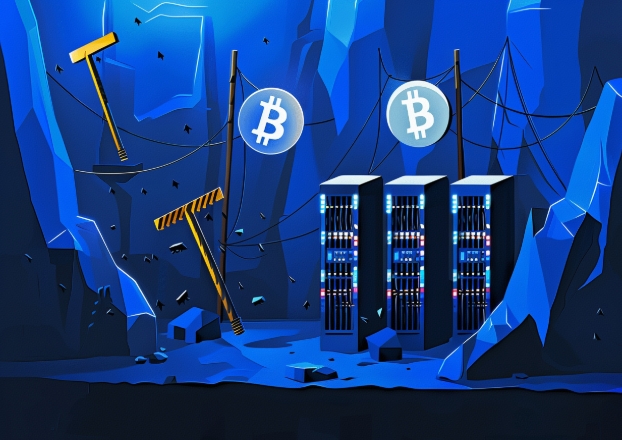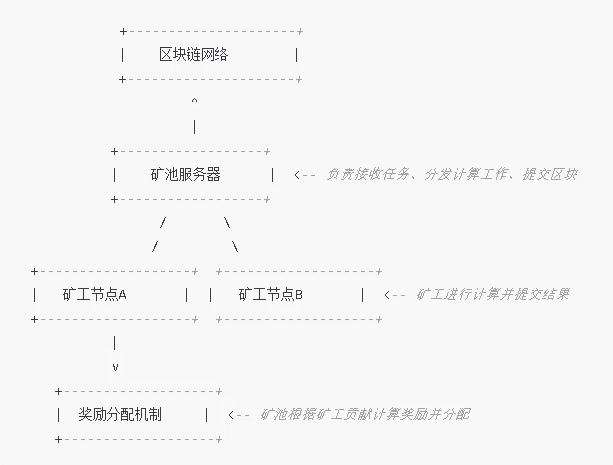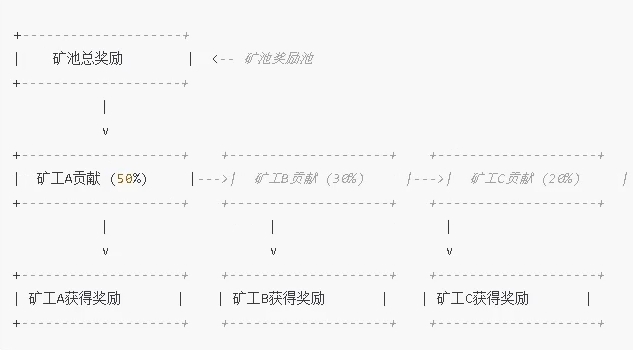Building a Mining Pool Platform from Scratch: A Comprehensive Guide for Developers
- latest articles
- 1.DApp Development & Customization: Merging Diverse Market Needs with User Experience 2.Analysis of the Core Technical System in DApp Project Development 3.How to achieve cross-chain interoperability in Web3 projects? 4.How does the tokenization of points reconstruct the e-commerce ecosystem? 5.How to Set and Track Data Metrics for a Points Mall? 6.What is DApp Development? Core Concepts and Technical Analysis 7.Inventory of commonly used Web3 development tools and usage tips 8.Development of a Distribution System Integrated with Social E-commerce 9.Six Key Steps for Businesses to Build a Points Mall System 10.What is DApp Development? A Comprehensive Guide from Concept to Implementation
- Popular Articles
- 1.Future Trends and Technology Predictions for APP Development in 2025 2.Analysis of the DeFi Ecosystem: How Developers Can Participate in Decentralized Finance Innovation 3.From Zero to One: How PI Mall Revolutionizes the Traditional E-commerce Model 4.DAPP Development | Best Practices for Professional Customization and Rapid Launch 5.Recommended by the Web3 developer community: the most noteworthy forums and resources 6.From Cloud Computing to Computing Power Leasing: Building a Flexible and Scalable Computing Resource Platform 7.How to Develop a Successful Douyin Mini Program: Technical Architecture and Best Practices 8.Shared Bike System APP: The Convenient Choice in the Era of Smart Travel 9.How to Create a Successful Dating App: From Needs Analysis to User Experience Design 10.From Design to Development: The Complete Process of Bringing an APP Idea to Life
Cryptocurrency mining pools are a crucial part of the cryptocurrency ecosystem. They not only help miners collectively mine cryptocurrencies and share profits but also ensure network security and decentralization. With the popularity of digital currencies like Bitcoin and Ethereum, mining pools have gradually become the primary way for large-scale miners to participate in network consensus. For developers, building an efficient, secure, and stable mining pool platform—whether as a personal project or a commercial product—requires a deep understanding of the principles, architectural design, and development techniques of mining pools.
This article will provide a detailed guide on how to build a mining pool platform from scratch, covering key technical aspects such as mining pool architecture design, software tool selection, mining pool security, and reward mechanism design. It aims to help developers quickly get started with mining pool platform development and optimize and innovate in practical work.
1. What is a Mining Pool?
In cryptocurrency networks, a mining pool is a collective mining method where multiple miners combine their computational resources. By pooling computing power, mining pools increase the success rate of mining, while reward mechanisms distribute the rewards proportionally to each participant based on their contributions. Mining pools not only improve miners' profits but also enhance the overall network security and decentralization through collective efforts.

The working principle of a mining pool involves combining the computational power of multiple miners to collectively process Proof-of-Work (PoW) tasks in the blockchain network. When a miner in the pool successfully solves a block's puzzle, the pool distributes the corresponding rewards proportionally to all participating miners based on their contributions.
2. Basic Architecture of Building a Mining Pool Platform
Building a mining pool platform first requires designing a suitable architecture. The core tasks of a mining pool include coordinating the work of multiple miners, receiving block rewards, and distributing them to individual miners. Therefore, the platform's architecture must consider efficient distributed computing, data synchronization, miner management, payment distribution, and other aspects.

2.1 Basic Components of a Mining Pool Architecture
The main components of a mining pool platform include the following core elements:
Mining Pool Server: Responsible for coordinating and managing miners in the pool, processing computational tasks submitted by miners, receiving updates from the blockchain network, and distributing rewards.
Work Distribution System: Responsible for assigning work from the blockchain network to each miner in the pool, ensuring that every miner can perform computations at the appropriate time.
Reward Distribution System: Distributes block rewards obtained by the pool proportionally based on the miners' contributed computing power. Common reward distribution mechanisms include PPS (Pay-Per-Share) and PPLNS (Pay-Per-Last-N-Shares).
Mining Pool Payment System: The mining pool platform needs to interact with the blockchain network to process reward payments. The payment system must ensure that miners receive their rewards promptly.
Mining Pool Monitoring System: Monitors the pool's operational status in real-time, records miners' work progress, computational output, earnings, etc., and provides management personnel with operational and optimization suggestions for the pool.
2.2 Efficient Data Synchronization and Load Balancing
Mining pools need to handle a large volume of miner requests and computational tasks, making data synchronization and load balancing crucial. Mining pools must use efficient algorithms and technical means to ensure that computational tasks are evenly distributed among miners and that all miners in the pool can access the latest blockchain data in real-time. Typically, mining pools employ distributed databases and caching technologies for data synchronization and use load balancing algorithms to prevent computational tasks from being overly concentrated, thereby improving the overall efficiency of the pool.
3. Choosing the Right Development Tools and Technology Stack
Mining pool development involves multiple technical areas, including understanding blockchain protocols, backend development, distributed computing, and network security. Therefore, selecting the appropriate development tools and technology stack is key to building a stable mining pool platform.
3.1 Programming Languages
Common programming languages for mining pool development include:
C++: C++ is the core language for many cryptocurrency clients like Bitcoin, offering high performance and suitability for blockchain mining-related software development.
Python: Python is suitable for rapid prototyping, and many mining pool projects use Python to write programs that interact with the blockchain.
Go: Go language excels in handling high concurrency, and many mining pool systems use Go to implement mining pool servers and backend services.
3.2 Blockchain Protocols and Clients
Mining pools need to interact with blockchain networks, so understanding blockchain protocols is essential. Common blockchain protocols include Bitcoin, Ethereum, and Litecoin. Mining pools must interact with blockchain clients (such as Bitcoin Core, Geth, etc.) to receive new blocks and submit miners' work results to the network.
3.3 Database and Caching Systems
Mining pools require efficient storage for miners' computational tasks, blockchain data, and reward distribution data. Commonly used databases include:
MySQL/PostgreSQL: These relational databases are suitable for storing basic pool data, such as miner information, computational tasks, and reward distribution records.
Redis: Redis is a high-performance caching system often used for task scheduling and real-time data updates in mining pools.
3.4 Mining Pool APIs and Web Interfaces
Mining pools typically provide API interfaces for miners to query their computing power, rewards, and work progress. Additionally, mining pool platforms usually require a web frontend interface to allow miners to view pool status, submit tasks, and check earnings.
4. Security and Protection Design
As a centralized service platform, mining pools face a range of security challenges. To ensure platform stability and protect miners' interests, developers must incorporate multiple security measures into the mining pool design.
4.1 Preventing DDoS Attacks
Due to the centralized nature of mining pools, they are vulnerable to Distributed Denial of Service (DDoS) attacks. To mitigate DDoS attacks, mining pool platforms can employ load balancing technologies, multiple firewalls, traffic filtering, and other measures to ensure pool stability.
4.2 Preventing Double-Spending Attacks
Double-spending attacks occur when malicious miners attempt to submit duplicate transaction data or blocks by exploiting network latency. Mining pool platforms can prevent such attacks by strengthening transaction verification mechanisms and enhancing communication security between blockchain clients and the mining pool server.
4.3 Preventing Malicious Miner Cheating
Some malicious miners may use fake computing power or manipulate the pool's reward distribution mechanism, compromising the pool's fairness. To prevent cheating, mining pool platforms can implement multiple verification mechanisms, such as share validation mechanisms and compliant work distribution algorithms.
5. Reward Mechanism Design
The design of a mining pool's reward mechanism directly impacts its attractiveness and miners' participation enthusiasm. Common mining pool reward mechanisms include:
PPS (Pay-Per-Share): Miners receive immediate payment for each valid "share" submitted. Suitable for pools with high-frequency transactions.
PPLNS (Pay-Per-Last-N-Shares): Rewards are distributed based on the number of blocks successfully mined by the pool over a specific period. Suitable for pools with high stability.
PRO (Proportional): Rewards are distributed proportionally based on the miner's workload. Suitable for pools requiring high stability.
Mining pool platforms should optimize their reward mechanisms according to market demands to attract more miners and ensure long-term stable operation.

6. Deployment and Operations
The deployment and operations of a mining pool platform are critical to ensuring its long-term stable operation. Developers must design the pool for high availability, ensuring quick recovery in case of failures. Additionally, the platform requires robust monitoring to track core functions such as computing power, transaction verification, and payments in real-time, enabling timely detection and resolution of potential issues.
During deployment, mining pool platforms often use cloud service platforms (such as AWS or Google Cloud) to build infrastructure, leveraging load balancing and distributed storage to enhance scalability.
7. Conclusion
Building a mining pool platform from scratch is a complex process that requires careful consideration of technical architecture, security, reward mechanisms, and efficient operations. As cryptocurrencies continue to evolve and mining pool technology advances, developers have the opportunity to innovate in this field, providing better services for miners and contributing to the prosperity of the cryptocurrency ecosystem. This article aims to offer valuable insights for mining pool platform developers, helping them successfully create an efficient, stable, and secure mining pool platform.
-

How to achieve cross-chain interoperability in Web3 projects?
With the continuous development of WEB3 technology, Web3 has gradually become an···
-

Inventory of commonly used Web3 development tools and usage tips
With the continuous development of blockchain technology, Web3 has become a hot ···
-

Web3 development trend prediction: analysis of future technology directions and application scenarios
With the gradual development of blockchain technology, the concept of Web3 has m···

 Blockchain
Blockchain










